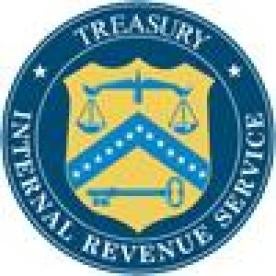The Internal Revenue Service (IRS) and the U.S. Department of the Treasury recently finalized Treas. Reg. § 301.6501(c)-1(g), which interprets § 6501(c)(10)’s extended limitations period (and other associated rules) where a taxpayer fails to disclose a listed transaction. The Regulation takes an expansive view of the statute and underscores the importance of complying with disclosure requirements applicable to “listed transactions.”
Overview
Under § 6501(a), the IRS generally has three years from the date a tax return is filed to assess additional tax. For example, if an individual who is a calendar-year taxpayer files his or her 2014 income tax return on April 15, 2015, the IRS has until April 15, 2018, to assess any additional tax owed with respect to 2014. Section 6501(c) contains 11 exceptions, including § 6501(c)(10), that either extend the limitations period or keep it open indefinitely. For instance, if a taxpayer files a false return, willfully attempts to evade tax or does not file a return, the IRS may assess additional tax at any time without regard to any limitations period. The limitations period can also be extended by agreement between a taxpayer and the IRS. See §§ 6501(c)(1)-(4); (e).
Section 6501(c)(10) provides that if a taxpayer fails to disclose a listed transaction as required under § 6011, the limitations period for assessment of additional tax with respect to the listed transaction will end no earlier than one year after the earlier of (A) the date on which the taxpayer furnishes the information required under § 6011, or (B) the date that the material advisor furnishes, upon written request by the IRS, the information required under § 6112 with respect to the taxpayer related to the listed transaction.
Congress enacted § 6501(c)(10) in 2004. Congress believed that taxpayers and their advisors had been using dilatory tactics and had been failing to cooperate with the IRS, thereby allowing the three-year limitations period to run and enabling the taxpayer to avoid liability with respect to an unreported listed transaction. By enacting § 6501(c)(10), Congress believed that it would encourage taxpayers to make required disclosures for listed transactions and would provide the IRS additional time to discover unreported listed transactions.
Years Covered
It is important to note the years to which these rules apply. Section 6501(c)(10) is effective for taxable years for which the limitations period had not expired before October 22, 2004. Thus, in general, it may apply to transactions that occurred as early as 2001.
In April 2005, the IRS released Rev. Proc. 2005-26, 2005-1 C.B. 965, to provide interim guidance until final regulations were adopted. Rev. Proc. 2005-26 remains effective for taxable years for which the limitations period expired on or after April 8, 2005, and before March 31, 2015.
Treas. Reg. § 301.6501(c)-1(g) applies to years for which the limitations period did not expire before March 31, 2015. Accordingly, for an individual calendar-year taxpayer, Treas. Reg. § 301.6501(c)-1(g) generally applies to 2011 and subsequent tax years.
Transactions Covered
It is also important to note the kinds of transactions to which Treas. Reg. § 301.6501(c)-1(g) applies. Although under § 6011 a taxpayer is required to disclose all “reportable transactions,” § 6501(c)(10) and Treas. Reg. § 301.6501(c)-1(g) specifically apply to listed transactions. Section 6707A(c)(2) defines “listed transaction” to mean “a reportable transaction which is the same as, or substantially similar to, a transaction specifically identified by the Secretary as a tax avoidance transaction for purposes of section 6011.” Notice 2009-59, 2009-31 I.R.B. 1 and the IRS website provide descriptions of transactions the IRS has designated as listed transactions.
Treas. Reg. § 301.6501(c)-1(g) clarifies that § 6501(c)(10) applies to a transaction even if the IRS had not designated it as a listed transaction when the taxpayer engaged in it. For example, if a taxpayer engaged in a transaction in 2015 and the IRS subsequently designated that transaction (or one substantially similar to it) as a listed transaction in 2017, the taxpayer has an affirmative obligation in 2017 to disclose that transaction under § 6011. Treas. Reg. § 301.6501(c)-1(g)(8), Example (2) and the preamble to the Regulation provide that the § 6501(c)(10) limitations period will remain open for an additional year after the taxpayer (or the taxpayer’s material advisor) makes a conforming disclosure. The preamble and the corresponding example suggest that the IRS must designate the transaction as a listed transaction within the three-year limitations period for the continuing reporting obligation to attach.
Treas. Reg. § 301.6501(c)-1(g) also applies § 6501(c)(10) to a transaction that is taken off the list of listed transactions after a taxpayer engages in it. For example, if a taxpayer engages in a listed transaction in 2015 and fails to report the transaction, the § 6501(c)(10) limitations period would continue to apply to 2015, even if the IRS removed the transaction from the listed transaction list in 2016. See Treas. Reg. § 301.6501(c)-1(g)(8), Example (13).
Taxpayers Covered
Section 6501(c)(10) and Treas. Reg. § 301.6501(c)-1(g) apply to all individuals and entities required to file returns under § 6011. However, when the IRS promulgated the Regulation, it was especially concerned about the use of pass-through entities in tax avoidance transactions. Accordingly, the preamble to the final Regulation provides that “when pass-through entities are utilized, the entities are not ultimately liable for the tax; rather, the taxpayers subject to § 6501(c)(10) will be the individuals and corporations owning, directly or indirectly, the interests in the pass-through entities.” Thus, even where a partnership, S corporation or trust properly discloses its participation in a listed transaction, each partner, shareholder or beneficiary is separately liable for filing the required disclosure with his, her or its return for the year of participation. Thus, a partner in a partnership who fails to disclose a listed transaction in which the partnership engaged is subject to the § 6501(c)(10) rules even if the partnership disclosed the transaction on its return for the relevant year. Likewise, if the partner discloses the listed transaction, § 6501(c)(10) does not apply, even if the partnership fails to disclose the transaction. See Treas. Reg. § 301.6501(c)-1(g)(4), (g)(8), Example (8).
This rather specialized rule for disclosures by partnerships and their partners raises some very complicated questions regarding the interplay between the limitations period for the partners under § 6501 and that for the partnership under § 6229.
Taxes Affected
By their terms, § 6501(c)(10) and Treas. Reg. § 301.6501(c)-1(g) extend the limitations period for any U.S. federal income tax “imposed with respect to” an unreported listed transaction. Importantly, though, Treas. Reg. § 301.6501(c)-1(g)(7) provides that § 6501(c)(10)’s extension of the limitations period applies to “interest, additions to tax, additional amounts, and penalties that are related to the listed transaction or adjustments made to the tax consequences,” including “any item to the extent the item is affected by the listed transaction even if it is unrelated to the listed transaction” (emphasis added). The Regulation gives as an example of an item affected by, but unrelated to, a listed transaction the medical expense deduction under § 213 that varies if there is a change in an individual’s adjusted gross income. Other, unrelated taxes that may also be affected by an increase in adjusted gross income include the child tax credit, exemption deductions reduced or disallowed because of increased adjusted gross income, and the alternative minimum tax. Accordingly, while the three-year limitations period would ordinarily be closed with respect to these items, these items would remain open for as long as § 6501(c)(10) applies.
Compliance Procedures
Finally, Treas. Reg. § 301.6501(c)-1(g) provides detailed compliance procedures, including narrow rules for when disclosure by a material advisor satisfies the reporting requirements and starts the running of the § 6501(c)(10) clock.
Generally, a taxpayer must report a listed transaction on Form 8886 and attach it to his or her income tax return for the year in which he or she undertook the transaction. The bulk of these compliance procedures are found in Treas. Reg. §§ 1.6011-4 and 301.6112-1, and the instructions to Form 8886. If the taxpayer participates in a single listed transaction that spans multiple tax years, a separate Form 8886 must be filed for each year. Further, if the taxpayer engages in more than one listed transaction in a year, a separate Form 8886 must be filed for each listed transaction.
Where the taxpayer fails to disclose the listed transaction on the relevant return, Treas. Reg. § 301.6501(c)-1(g) imposes specific reporting obligations for disclosure in a later taxable year. In such a case, in addition to filing Form 8886, the taxpayer must include a cover letter that contains a reference to the relevant tax return(s), the taxable year(s) at issue and a statement signed under penalty of perjury. The letter and the Form 8886 must both be sent to the IRS Office of Tax Shelter Analysis (OTSA). Treas. Reg. § 301.6501(c)-1(g) and the preamble make it clear that if a submission does not include the required cover letter, the transaction will remain unreported and the § 6501(c)(10) limitation period will not begin to run.
The most notable compliance provisions of Treas. Reg. § 301.6501(c)-1(g), however, relate to how narrowly the Regulation constrains the satisfaction of the disclosure rules by a material advisor (as defined by Treas. Reg. § 301.6111-3(b)).
First, Treas. Reg. § 301.6501(c)-1(g)(6)(ii)(A) clarifies that only receipt of information provided by a material advisor—as opposed to some other person or entity—will meet the disclosure requirements under Treas. Reg. § 301.6501(c)-1(g)(6), except in limited circumstances related to dissolution or liquidation of an entity that is a material advisor, or in the event of a designation agreement.
Second, Treas. Reg. § 301.6501(c)-1(g)(6)(ii)(B) provides that information not furnished in response to a written request from the IRS pursuant to § 6112 will not satisfy the requirements under Treas. Reg. § 301.6501(c)-1(g)(6) even if provided by the material advisor, unless provided to the OTSA in accordance with Treas. Reg. § 301.6112-1(d) (when material advisors liquidate or dissolve). Accordingly, information provided to the IRS by a material advisor in response to an Information Document Request in a § 6700 investigation or as a result of a summons enforcement proceeding will not commence the § 6501(c)(10) limitations period.
Finally, Treas. Reg. § 301.6501(c)-1(g)(6)(ii)(C) provides that the material advisor disclosure requirements will not be satisfied unless the material advisor identifies the taxpayer as a person who undertook the listed transaction.
Conclusion
The final Regulation’s detailed rules make it clear that, ultimately, disclosure of a listed transaction is the participating taxpayer’s obligation. Under those rules, a taxpayer should not depend on disclosure by a material advisor or a pass-through entity to avoid the application of § 6501(c)(10) to keep the limitations period for the year of the listed transaction open. These rules underscore the importance of a taxpayer’s disclosure of a listed transaction on his, her or its original return for the year in which the listed transaction occurred, or, where a transaction is subsequently listed, as soon thereafter as possible.





 i
i